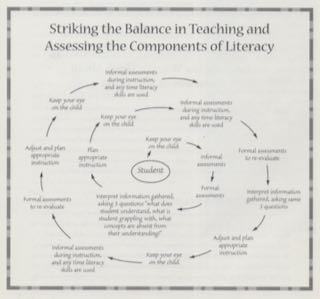Homewreck
By: Harvey Smokey Daniels
The greatest source of tears and heartbreak in our family, over all of our child-raising years, was homework. Like by far. Like 90%. Those unbidden, meaningless assignments, the mechanical worksheets, and odd-numbered math problems constantly led to friction, battles, resistance, weeping, and regret. It felt like the school was sending little hand grenades home with our kids, timed to explode just before a peaceful, playful, or relaxing evening could break out. That relentless assault on our family life still feels fresh, even though our kids are now 39 and 33.
During this time, Elaine and I were both teaching, researching, and writing about progressive classroom practices – one of which was not worksheets. Nick and Marny knew very well what our professional principles were, so they could have called out our hypocrisy whenever we tried to enforce the evening’s dosage of drivel. But they didn’t often use that leverage; they knew we would marinate in our complicity. And we pretty much quit supporting school homework when they reached high school.
And then there was the perennial pinch of being teacher-parents. You want to be a loyal employee of the district. You don’t want to accuse your colleagues of doing dumb or harmful things to children. And you recognize (or you should) that teachers get even fewer opportunities than normal parents to complain about things at school. When you are an educator, you simply can’t afford to be labeled, “One of Those Crank Parents.”
If you resonate with these concerns, you may be fondly recalling Alfie Kohn’s entirely excellent book The Homework Myth: Why Our Kids Get Too Much of a Bad Thing (2006). Kohn likens homework for kids to the Second Shift for workers at the factory. You come home after eight hard hours and surprise – you have to go back to work! Kohn skillfully deconstructs every official rationale for homework. Decades of careful research studies have shown only negative outcomes for elementary kids and glancing, temporary ones for certain high schoolers. Then he runs through the more likely reasons that homework has been sustained against all evidence: upholding tradition, fostering obedience, providing ritual hazing (we had to go through it, now it’s your turn), developing a tolerance for toxic tasks, keeping kids off the streets, and finally, the redoubt of all scoundrels, the notion that homework “builds character.”
For all the good work our friend Alfie did a decade ago, unexamined homework is still with us, in arguably more toxic forms. It’s bad enough when homework is menial, meaningless, and repetitive–a mere compliance ritual. But the content of homework sheets can be even more corrupting than the process. We have just lived through another “Black History Month,” during which millions of kids came home with worksheets, mostly focused on Martin Luther King, (apparently the only African American leader of whom worksheet makers are aware.) This year’s assortment included MLK word-finds, matching exercises, fill in the blanks, word searches, and many more. Among the tasks:
- Crossword puzzle clue for #7 Across:
Martin Luther King was assassinated during the month of __________.
- A short historical text about MLK, followed by these instructions:
“Circle ten proper nouns and underline ten verbs.”
- Freedom, peace, march, speech, Atlanta, minister, equal, dream, boycott, leader.
- “Read these words and place them in alphabetical order.”
- True-False: “Martin Luther King was a farmer.”
- For those ready to further explore black heroes, another worksheet confides that Rosa Parks was “a tired seamstress who politely declined to give up her seat on the bus” because of her fatigue. Needless to say, the profile doesn’t mention that Parks had been an activist and leader of the NAACP for two decades and that she was tired of racism, not sewing.
Just in case you’re wondering, I am not making this up. These and hundreds more worksheets are available on the web for teachers to use, reuse, and reuse. And these are not just time-wasters: they are desecrations of history and a pretty good example of how ignorance is engineered.
Just last week, a suburban Chicago teacher whom I follow on Twitter bravely began tweeting out photographs of her own young children suffering over the daily load of second-shift misery.
This is the face of my five-year-old doing useless homework when she would rather be playing. Five-year-olds don’t need homework. #ditchthehw
Tonight’s useless homework: track how many words you can read in 1-minute #ditchthehw
Things my kids could be doing right now instead of useless homework:
-reading
-playing with each other
-drawing
-talking to me about their day
-playing with their toys
-relaxing after 8 hours in school
#ditchthehw
So let’s get real. Let’s say you may work in a district where there is a serious Homework Policy dictating how many after-school minutes or hours kids are supposed to labor after school. So, let’s start by changing the categories of what counts as homework. Then, let’s design a time that’s stress-free, that invites kids’ curiosity and choice, and that doesn’t start battles between parents and kids, ruin whole evenings, and sell more Kleenex. Possible ideas for kids:
–Spend some time reading a book or magazine you have chosen.
–Go online to investigate a question that popped up in your life today.
–Interview family members about their work, interests, family history.
–If you are in a literature circle at school, e-connect with classmates to discuss the book.
–Work on an ongoing “passion project,” something you have decided to look into long-term (animal extinction, volcanoes, the Cold War).
–Watch TV shows with family and talk about them.
–Free write in your personal journal (or work on your novel/poems).
–Pick an adult in the community you want to learn from and apprentice yourself.
Let’s grow this list together. Meet me at #DitchTheHW.
Learn more about Smokey!
![]()









